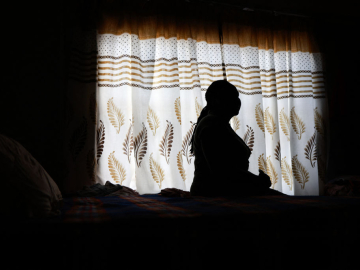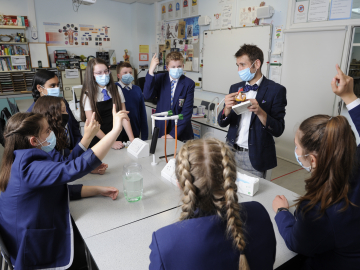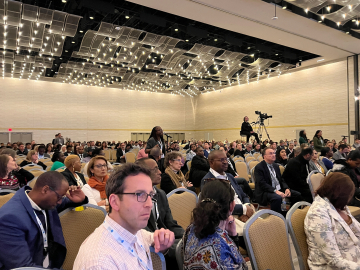Why India Has So Many Drugs With Dangerously Similar Names
India’s $50 billion pharmaceutical industry supplies drugs across the globe, but flimsy regulation in the domestic market allows countless easily confused drug names with no system for tracking the problem, says Dinesh Thakur, a public health activist and co-author of The Truth Pill: The Myth of Drug Regulation in India.
Thakur, who has spent the past decade advocating for tighter drug safety regulations, spoke with GHN about dangerously similar drug names in India and how they symbolize wider problems in the country’s regulatory system.
What are some drugs with dangerously similar names in India?
An oncologist at Mayo in Minnesota—who is of Indian origin—recently highlighted one drug used in India to treat multiple myeloma—Linamac 5—which is an almost identical name to a diabetes drug—Linamac.
Another drug name, Medzole, is marketed in India by four different companies to sell four different active ingredients for different medical conditions. There’s a sedative, Medzole; Medzole-DSR, which treats acid reflux; Medzole 400, a deworming treatment; and Medzole 200, an antifungal treatment.
Beyond the names themselves, what else adds to the risk?
If a drug name is very similar to another medicine, there's a probability that even a trained pharmacist can make a mistake. In India, most drug dispensaries don't have properly trained pharmacists, so the probability of somebody making a mistake—for example, dispensing a sedative for somebody who's actually suffering from an infection—is very, very high.
What is the extent of the problem?
The sad part of this is that as a country we don't have a way to track such medication errors—the Indian government doesn’t collect that data. All we can say is that anecdotally, there's a high probability that somebody will make an error.
How are drugs approved in India?
The U.S. FDA evaluates drug names from a trade name point of view, and from the “confusion point of view” to make sure it doesn't sound similar to something that already exists.
There is nothing like that in India. India’s drug regulation system is very fragmented. There is a national regulator, and individual state drug regulators who also approve medicines. There isn't a common process for all these regulators cross-check a trade name that's that is submitted for approval from a company.
If you're making a medicine formulation that already exists in the market, you just start a company and … get approval from a state drug regulator. Take 200 milligrams of acetaminophen, for example—there'll be thousands and thousands of drugs with that formulation called everything under the sun.
Are there rules intended to rectify this?
Technically, companies need to self-certify that their names are not substantially similar to other products available the market. But there is no enforcement mechanism for that.
So even if a pharma company wanted to comply with this recommendation, how would they do that? There is … no single authoritative place where somebody can go and check and say, “I want to call my drug X. Is there something out there that sounds similar to this?”
India’s pharmaceutical industry is a major global player—how do these regulatory gaps impact the global market?
Forty percent of the generic drugs that are dispensed in the U.S. come from India, and India has a very large base of generic medicine that is exported to Europe.
In India, there are manufacturing facilities that produce drugs for those markets, and a whole different set of facilities that make drugs for India and for lower income countries in Africa and Latin America. The Indian Government values access and affordability over quality, and the regulations are a lot more watered down.
Do you see the models of countries with stricter regulations, such as the U.S. as the solution?
The U.S. model works in some respects, but access to medicines is very important and in the U.S. we still have a broken model when it comes to health care.
India is a very different country—a poor country. The problems in the U.S. are different from India, and solutions are different. You can't copy and paste—but having some kind of system for naming that's tailored to India would be desirable.
That is one of the one of the focus areas of our activism: to try and improve the standards of manufacturing quality of the drugs that are made for use in India.
What has been the response to your activism?
There really hasn't been much of a response or political will to fix this with the force of law. Unless a law is framed to say, “This is the process by which we're going to make sure that drugs are properly named,” you can have as many guidelines as you want, it's not going to make any difference.
I've been at this for 10 years now and trying to reform this industry, and it was only last year that some folks in the government became willing to listen.
Why are they paying attention now?
Two years ago, a cough syrup made in India was responsible for killing 70 children in the Gambia and 16 children in in Uzbekistan. That has drawn attention to all the problems with the Indian industry—that has created a PR issue. That's probably why there’s some ability now to listen to what needs to change.
This article is part of a two-part series on drug naming. Read Part I here.
Join the 50,000+ subscribers in 170+ countries who rely on Global Health NOW summaries and exclusive articles for the latest public health news. Sign up for our free weekday newsletter, and please share this link with friends and colleagues.
A pharmacist attends to a customer in an Indian pharmacy. Carlos Duarte/Getty





